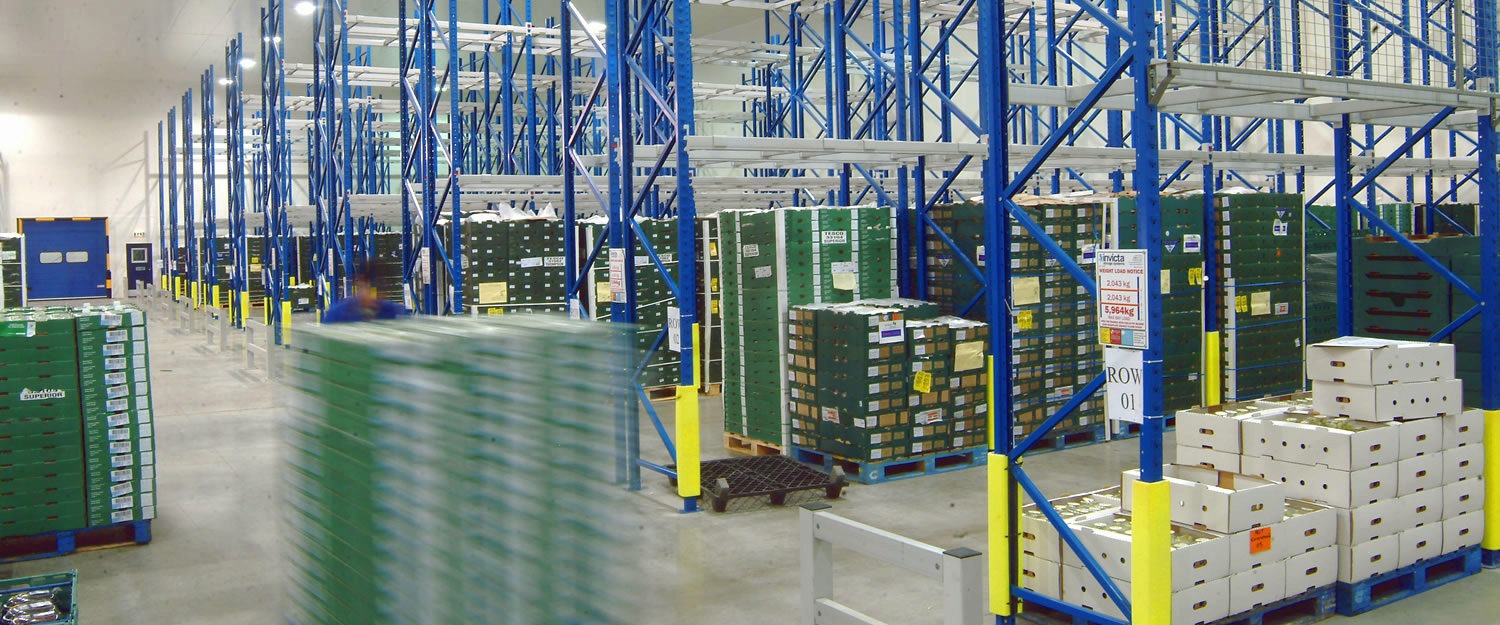For your information
You are being redirected to one of our divisional subsites which contains more detailed information on the required division. To navigate back to the main Invicta Group site, please click the link found in the footer at the bottom of the page.
How to tell if narrow aisle pallet racking is right for you
7th January 2020
Narrowing it down
Quick Quote
Contact Mick Coyne
To get a quotation or arrange a free site survey - Call Mick Coyne on
-
 UK
UK
Current location:
Quick Quote
Contact Mick Coyne
-
 UK
UK
Current location:
When you’re browsing the various options for a new warehouse pallet racking solution, it’s likely that you’re looking to maximise the efficiency of your space. In this regard, narrow aisle pallet racking may jump out as the obvious solution. This form of racking is perhaps the most space efficient of any that we offer, reducing aisle widths to cram more products in less space.
If choosing the right pallet racking solution was as simple as picking the most space efficient one, however, we wouldn’t offer the range that we do! In reality, the racking you choose will depend on a wide range of factors, including what you will be using it for and the unique dimensions of your space. Here are just a few pointers to tell if narrow aisle pallet racking is right for you, and some alternatives if it isn’t.
What is narrow aisle pallet racking?
In many ways, narrow aisle pallet racking does exactly what it says on the tin. By reducing the aisle width between racks by as much as 50% compared to traditional racking formats – sometimes as narrow as 1.7 metres across – more racks can be fitted into the same amount of space. This allows for more products to be stored, and can allow businesses to increase the lifespan of their existing facility, or cater to sudden and temporary increases in demand.
Narrow aisle pallet racking does not have any structural disadvantages compared to other racking types. It offers the same high density storage, can be built just as high, and can support heavy pallets and various sizes and shapes of goods. It can even accommodate an automated storage and retrieval system (AS/RS), which for certain products is a palatable (excuse the pun) alternative to vehicular retrieval.
What are the disadvantages of narrow aisle pallet racking?
The key difference between narrow aisle pallet racking and other forms of racking is in the method of storage and retrieval. As a result of the narrow aisle width, specialised vehicles are often required to put away pallets and pick products. Pallet handling trucks tend to require a minimum of 1.7 metres to deposit pallets, although order picking trucks can operate in slightly less space if you are able to store your goods manually.
A very narrow aisle pallet racking system can massively upgrade your storage capacity, but the need to manually store goods in the racking limits it to certain goods types, and will dramatically reduce your efficiency. If you opt for vehicles or an automated system, you will likely have to invest heavily to make your racking system operable, although this should pay off over the long term.
This sense of short term pain, long term gain is less useful when you’re looking for a flexible racking solution. One of the benefits Invicta Racking provides is the ability to easily remove, retool, relocate and expand on existing racking systems. If you are only looking to temporarily increase your storage space, or expect that you may have to move it or rework it at some point in the future, narrow aisle racking may not be the best choice for you.
What are the alternatives to narrow aisle pallet racking?
Wide Aisle Pallet Racking
Wide aisle pallet racking is functionally very similar to narrow aisle racking: it offers high density storage with a flexible, modular design, and is suitable for all kinds of goods. The primary difference is in the aisle widths, which are designed to cater to standard handling vehicles rather than smaller, guided systems. This makes it perhaps the most cost-effective solution that can still deliver a marked improvement in terms of storage space over other traditional formats.
Drive-in Pallet Racking
Depending on the nature and number of your stored goods, there may be an even more efficient form of pallet racking. Drive-in pallet racking removes aisles from the equation entirely, and can save up to 90% of the space of a traditional layout.
Goods are stored in single bays in a last in, first out (LIFO) orientation, by literally driving into the bay to pick up the pallet. This is ideal if you’re looking to store identical, non-perishable goods in a relatively compact space, where front-facing retrieval is preferable to a multi-aisle layout.
Push Back Pallet Racking
Similar to drive-in pallet racking, push back racking differs in that the goods present themselves for retrieval at the front of the racking. While less optimal in terms of space saved – push back racking can save up to 25% of the space of traditional racking – this format can greatly increase retrieval times. It’s also ideal for cold storage, with efficient operation at low temperatures.
Double Deep Pallet Racking
A compromise between a wide aisle system and a drive-in system, double deep pallet racking reduces the number of aisles by storing one pallet behind another. This LIFO format is well suited to warehouses with a high throughput of pallets – in other words, where pallets are added and removed regularly – and can be easily configured to work with automated vehicles and retrieval systems.
Cantilever Racking
While most of our forms of racking can be adapted to multiple purposes, cantilever racking is the most naturally suited to unusually shaped pallets and objects. Where narrow aisle racking might struggle with the retrieval of non-uniform pallet sizes, cantilever racking uses a series of arms to support objects of differing sizes and lengths, such as pipes, timber and furniture. It can also be built higher than many other kinds of racking, making it potentially the highest density option.
—
Picking the optimum pallet racking solution can be difficult if you don’t know the exact dimensions and capabilities of your space. With a complementary site visit, Invicta Racking’s dedicated Project Managers will help to guide you towards the ideal choice for your business. To speak to our advisors and arrange your free visit, don’t hesitate to get in touch.











Share/Like this page